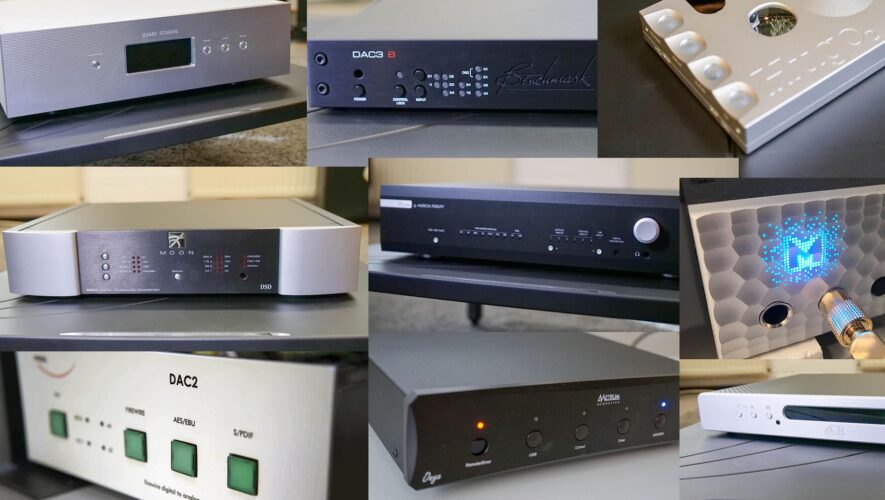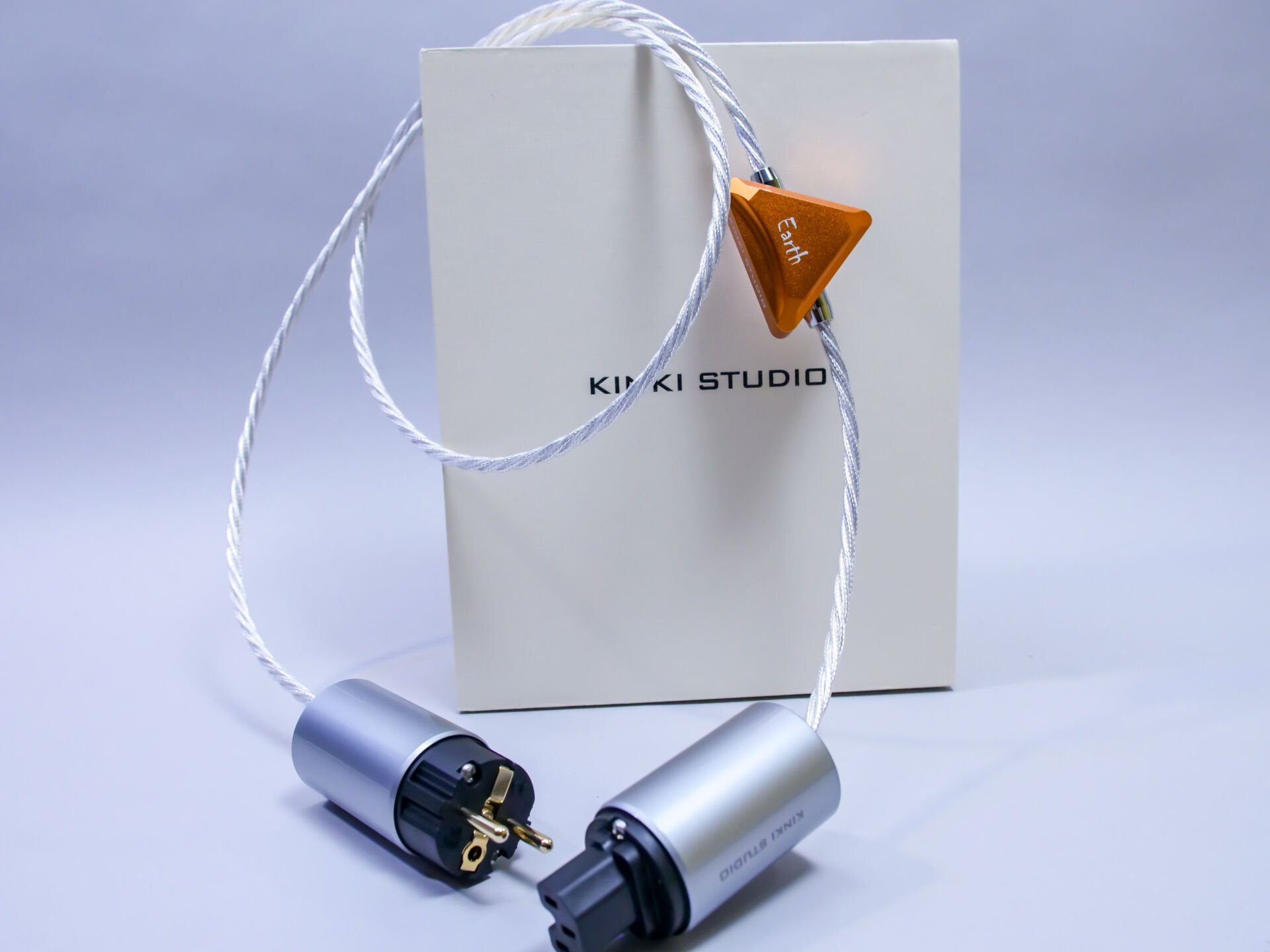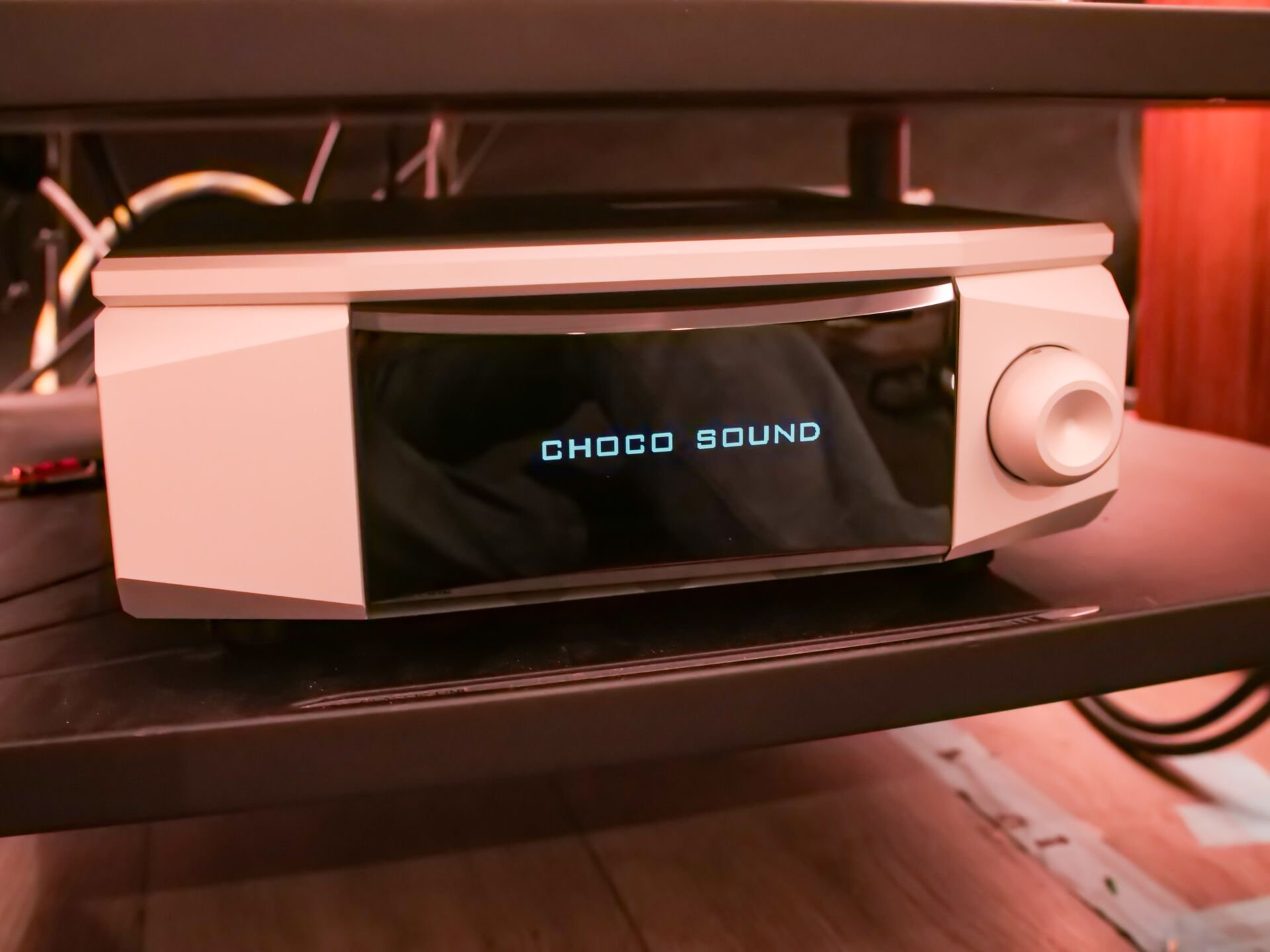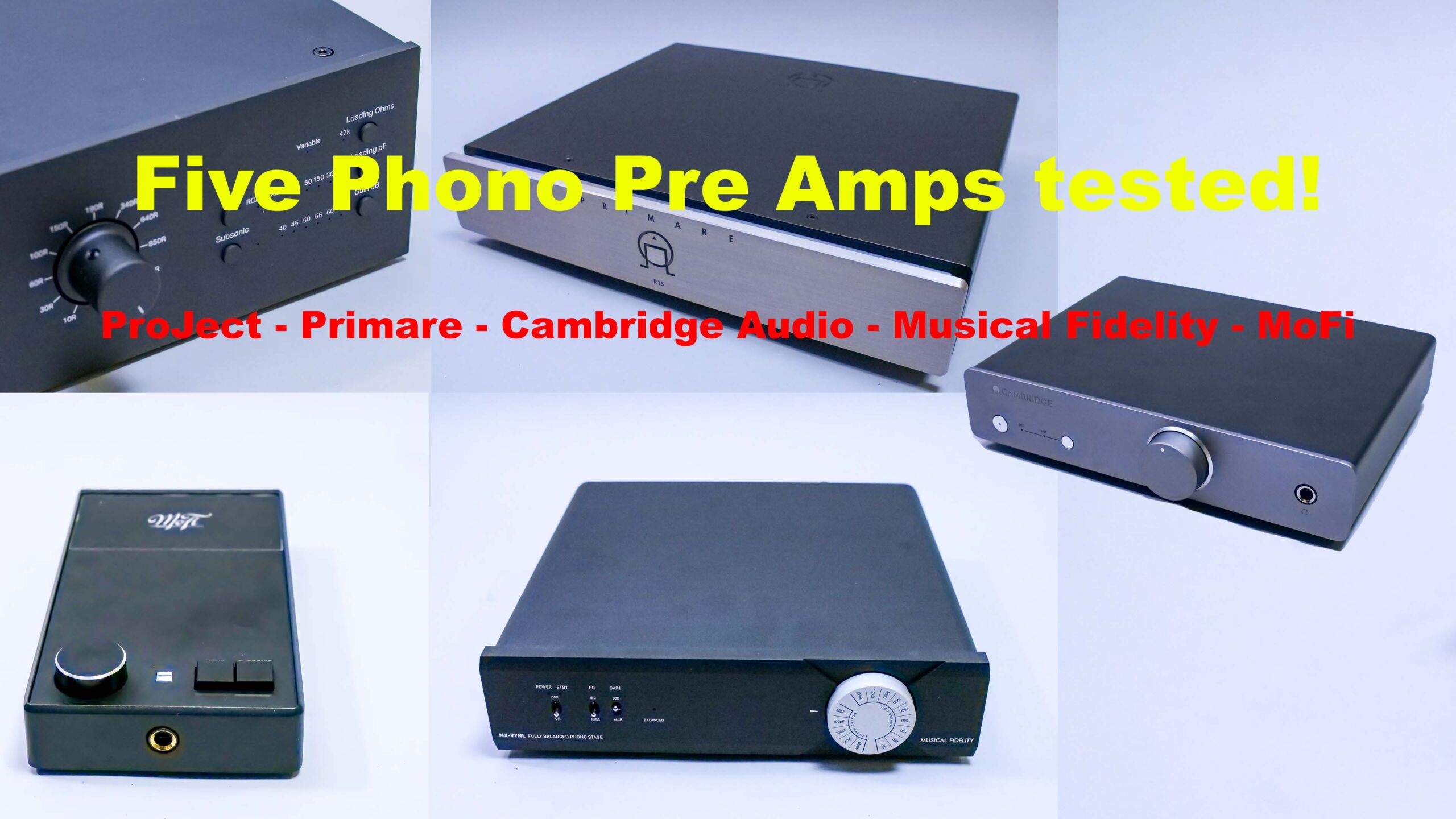

Part One
Contents
Atoll DAC200 Signature
The French company Atoll sent us the DAC200 signature. A nice converter based on an ESS 9028pro dac-chip. A chip that has been used a lot and is therefore very common in our test. The chip can convert both PCM and DSD. We are, of course, curious about the sound differences between the dacs based on this chip.
For the author in question, it is the first acquaintance with the brand. However, Geoffrey has had their things on the test bench and even visited the factory. In short: for him the signature series is not new and he knows that everything Atoll makes is done with the greatest care.
The Atoll DAC200 is a fairly simplistic looking piece of electronics. It is neatly finished and easy to use. The number of inputs will make even the most demanding user happy. Three times optical, three times coaxial, AES and usb. Then there is an optical and coaxial output and of course various analog outputs. It’s one of the most versatile dacs. And that for ‘just’ 1500 euros.
The sound of the Atoll DAC200 signature is nice and open and upbeat. This without ever coming across as sharp or edgy. It is a fine and generous converter with a striking rhythmic character. However, when we set up Steven Wilson’s Pariah, we do hear a little bit of compression in the crowded passage. Not everything is as easy to follow. Something we didn’t observe at the Weiss and the Benchmark. It’s a really tough track, so we’ll forgive the Atoll (a bit).
All three of us are quite impressed by this French creation. Especially considering the favorable price tag. Recommended.
DAC3 Benchmark
We already know the American Benchmark very well at Alpha. We have had the AHB2 power amplifier, HPA-4 headphone amplifier / pre-amp and both the DAC2 and DAC3 at the test bench. But those were the HGC versions. So with volume control. Now it is time for the ‘regular’ DAC3.
The Benchmark DAC3 is built around an ESS SABRE 9028pro. It converts PCM and DSD. Like many other dacs based on the Sabre in this test. Benchmark hasn’t changed much compared to the DAC2 at first sight. We already indicated this in the review of the DAC3 HGC (Dutch). However, the ‘3’ does sound a lot better. So there’ll be more to it than just a swap of the chip.
In terms of connectivity, this is not the most versatile – that’s the Mytek – but it comes along fine in the test field. We notice two coaxial connections, twice optical, twice analog (cinch) and one usb. Then, of course, the analog outputs. There is a choice for balanced and single ended. Strangely enough, no AES and BNC digital in. Or balanced analog in. After all, it’s a pro product.
Although we didn’t expect it, we suspect that the Benchmark DAC3 sounds better without volume control than the version with volume control. That in itself is not very strange, since a volume control almost always does something with the playback. In this case, it also turns out positively that there is no volume control in the signal path.
The Benchmark – which we tested as the last one – comes across as very clean, detailed, dynamic and quiet. The DAC puts down a particularly well-balanced pallet. If we take the notes, we see terms like: kick, punch, inaudible, ink-black background. Your editor finds the ‘silence’ particularly striking with this converter. The silence between the notes can be heard and felt with this dac. And that’s very impressive considering the price tag of about 2000 euros.
We can conclude that the Benchmark is definitely a good choice in this price range. It brings everything the discerning audio and music lover desires. And that in a cabinet that exudes functionality and a no-nonsense approach. Top product.
Chord Hugo2
Chord is different. Just like Metrum, this manufacturer makes its own dac-chips. Metrum does that ‘discreetly’ and with the help of an Fpga – field programmable gate array – to combine the data; Chord programs an fpga as a dac-chip. Of course that is a possibility. The man behind this technology – in Chord’s case – is Rob Watts. Watts has its own way of filtering.
Very simply explained, an interpolation filter in an (oversampling)dac must calculate the ‘missing pieces’ that arise when calculating upwards. Then it has to put these ‘missing data bits’ in the signal. This calculation can be done in many ways, but one of the most common methods is to store some data, and then calculate a logical value from it. So you’re sort of tapping out of a data tank. That data tank isn’t usually very big. And that’s exactly the problem according to Watts.
So Watts has developed its own method to create a better interpolation filter. The number of taps – or the length of the taps – is crucial. The high-end DAVE dac has 164,000 taps. The Chord Hugo2 in this test is about 50,000 taps (49,152 to be exact). According to Watts, it is definitely audible when the number of taps is increased. After all: more data = fewer rounding errors. Ideally, the barrel is infinite… but, yeah, that’s not really realistic.
Now the Chord Hugo2 is a mobile dac and therefore an odd man out. The Hugo2 has a battery that should last about seven hours. Quite impressive if you ask me.
To receive data you can choose between an optical connection (combo 3.5mm), coaxial (combo 3.5mm), Toslink, bluetooth (!) and usb. We also find an analog output (cinch) and two headphone outputs: 6.35mm and 3.5mm.
The Chord scores well in terms of design. It’s nice and different. But you have to admint: it is a hate it or love it product design. We’re not going to judge.
However, soundwise, the Chord does not convince the Alpha trio. We’re missing some refinement. The whole thing is – in our system – a tap on the sharp side. That could be because of the sound balance of the Chord, or of course just a mismatch. The bass is also a bit messier than with the Atoll (and other dacs). In short, not such a nice match. This is a converter that is probably great in combination with a nice pair of headphones. However, in an ordinary hi-fi system: we think there are better choices.
Kinki Studio Vision DAC-1
A striking candidate in this lineup. Kinki Studio is a Chinese brand that markets interesting products. Geoffrey tested the integrated amplifier. And that’s a good product. In this multitest we pick up the converter: the Kinki Studio Vision DAC-1.
Just like the EX-M1, the Vision DAC-1 has a ‘glossy’ appearance. The front panel, shiny finish and also the size have to appeal to you. Fact is: the dac is beautifully made. Also striking is the application of an AKM AK4495 dac-chip. We don’t see that very often. It’s a shame, because they’re nice chips.
If we look at connectivity, we find a somewhat meagre offer: once coaxial, once AES, once bnc and once usb. That will cause some problems for some enthusiasts. Think of the connecting a TV, which often happens optically. Nice that AES and BNC have been added. We don’t always see that.
The sound of the Kinki Studio is very pleasant. Very light-footed, precise and detailed. The stereo image is large and airy. Striking is how well the Kinky Studio Vision DAC-1 handles voices. Your editor can almost hear the pain in Bob Marley’s voice when he sings Redemption Song. Impressive.
The Kinki Studio dac tends towards light and airy when it comes to sound balance. And the presentation is precise and fast. For some enthusiasts, the whole thing will miss a little chest and warmth. Then the Benchmark is a better choice. By the way, know that the Kinki has not at any time played analytically.
Metrum Acoustics Onyx
A friend of Alpha’s. The Metrum Acoustics Onyx has been playing with Geoffrey for some time now. And at the office, we’ve been playing the Pavane for a while. Just like the Amethyst headphone dac and Ambre Roon streamer. The reason that we like to play with Metrum, is that – for us – they add little to nothing to the sound; there is almost no ‘sound’. Although there is a slight ‘Metrum signature’.
The Onyx has a total of four Transient-2 dac modules. Of course NOS: Metrum only makes NOS / R2R dacs. In each module there are in fact two dac-chips with in between them an fpga that combines the signals of both chips into one signal. At the end, all signals are combined again to a stereo music signal. This is a very, very short explanation. If you want to know more, we refer you to the story about the Metrum Acoustics Pavane where we go deeper into the technology. It’s a fine example of Metrum’s work.
What may be important to know is that the name Metrum Acoustics may disappear. Cees Ruijtenberg continued his business under the name Sonnet. The support around Metrum remains, so don’t worry. We now have a Sonnet Morpheus dac – successor to the Jade or even the Adagio – to listen to. This dac / pre-amp contains the successors of the Transient-2 chips. You can read more about this soon.
The Onyx has four inputs: USB, coaxial, optical and aes. The USB input can also be replaced for I2S if you want to pair an Ambre Roon endpoint a little bit better. Too bad it doesn’t fit both.
Soundwise, the Onyx feels a bit like coming home. This is not odd, since two of the three authors play a Metrum every day. The whole thing comes into the room in a wonderfully rhythmic, clean way and with a lot of commitment and soul. The Onyx gives the impression that it presents very honestly. The presentation also feels very ‘quiet’ or black, as we call it. In short: the Metrum leaves a good impression.
But if we put our habituation aside for a moment and listen critically, we notice that the stereo image – although very tight, stable and precise – can be somewhat larger. Compared to the Kinky (and later also the Benchmark) we miss some air and ambiance in the way it presents. Some dacs simply make the acoustics of the recording room more audible.
At the bottom of the line, this is a converter we can live with just fine. We won’t miss anything and will undoubtedly enjoy listening to music. Partly because of the honesty and precision and ‘silence’ in the display, this is a wonderful converter for those who do not want a ‘opschmuck’.
























